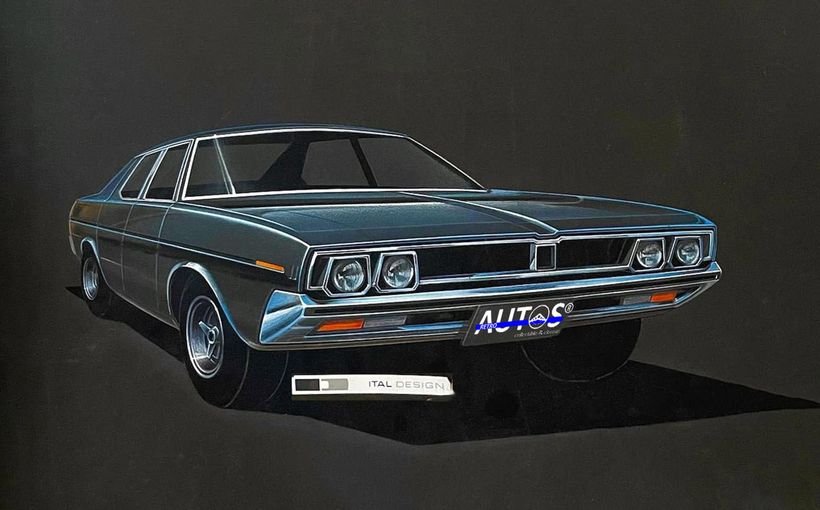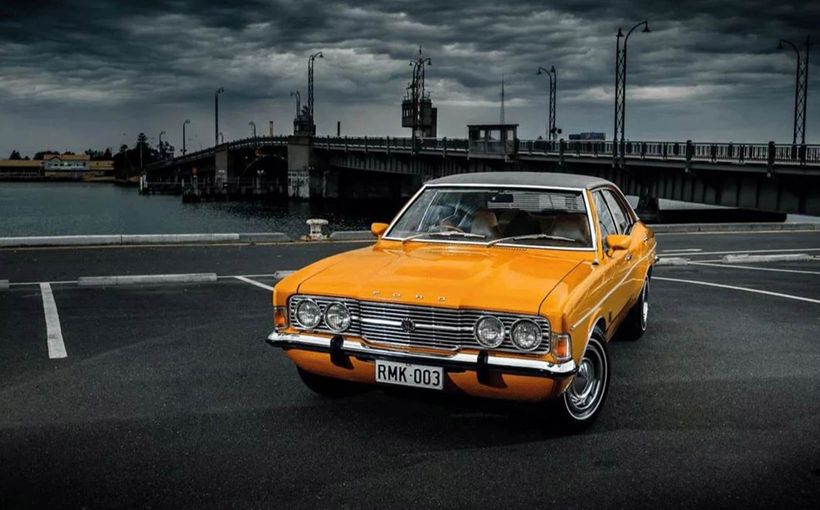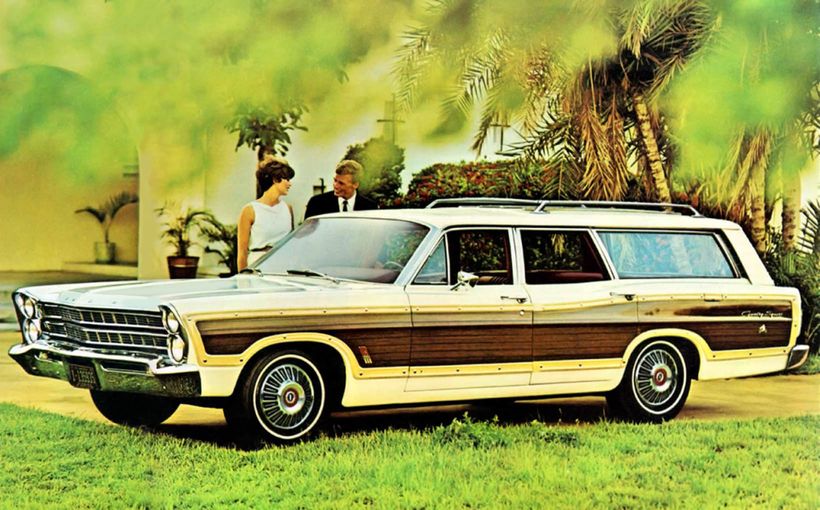
If you read certain books, magazines and online stories about the history of dream and concept cars, you could be forgiven for assuming that it all ended when General Motors (GM) presented its final Motorama during the northern hemisphere winter of 1960-61.
But that would be a wrong assumption. The 1960s was a decade of dazzling dream cars and creative concepts.
Ford, GM and Chrysler continued to spend millions of dollars to showcase their technological and styling prowess. Rather than create expensive Motorama-type extravaganzas, the companies transitioned to a wide range of communication channels—print, TV, radio, auto shows, auto racing events and their many dealership showrooms across the county—to shout out their claims to be the leader of the automotive future.
In the April 2021 Retroautos, I featured the three Dodge Charger concept cars. In previous Retroautos I’ve written about other 1960s concepts: Dodge FliteWing, Chrysler TurboFlite, Plymouth VIP and Chrysler 70X. In case you missed them, I’ve listed the links at the end of this story.
This month the spotlight is on Ford’s full-sized concept cars from the first half of the 1960s, three of which, surprisingly, still exist.
Gyron
Of all of Ford’s concept cars, the two-wheel Gyron was the most unusual. First shown on 1st April, 1961 at the New York International Auto Show, the Gyron was developed to counteract the enormous publicity General Motors had gained for its winged, finned and jet engine Firebird III.

Ford designer and Gyron champion, Alex Tremulis, had been working on the idea of a two-wheeled car, stabilised by gyroscopes, since 1956. Serious effort on the Gyron began in 1959 in the Advanced design studio managed by Elwood Engel. The Gyron was big, at 5.3 metres in length. It held two occupants. They sat side by side in moulded plastic chairs. A clear plastic canopy roof was raised and lowered electrically to allow entry and exit. All the usual space age gadgets were said to be onboard.

Costs prevented gyroscopes ever being engineered into the Gyron, and it was given two outrigger wheels to ensure stability when it ran, with power provided by a car battery. Steering was by a small dial located on the centre console.

From all reports Tremulis was a maverick designer who was a strong advocate of aerodynamic styling. He started his career at Auburn-Cord-Duesenberg. For a short time, he was at GM. Tremulis styled the 1941 Chrysler Thunderbolt dream car and during World War II was in the US Air Force designing future aircraft. He was the chief designer for the ill-fated Tucker automobile and moved to Ford in 1952 after a sojourn at Kaiser-Frazier. Tremulis encouraged a future boss of Ford design, Jack Telnack, to pursue a career in automotive design. Telnack told me he never forgot Tremulis’ championing of the benefits of aerodynamics. After he left Ford, Tremulis established a design consultancy. One of his last designs was the Subaru BRAT.
The original Gyron was destroyed in the 1962 fire which consumed Ford’s Rotunda in Dearborn. Also lost in that fire was Ford’s first station wagon concept, the Mercury Palomar.

Palomar
The Palomar was one of two cars unveiled at the 1962 Chicago auto show, held in February of that year. The other was the Cougar 406.
The Palomar’s svelte pillarless hardtop design reflected Mercury’s production wagons, which were all hardtops. It was a non-operable fibreglass model. The driver’s side had one door, giving that side of the car a coupe-like appearance. The passenger side had two suicide doors. There were three rows of seating.



The car was named after the large astronomy observatory near San Diego, California. And here’s why. When the rear half of the roof was retracted, the forward-facing third row seat elevated six inches/150mm to provide a vista of the heavens and the road ahead. A small wrap around windshield was fixed to the roof to protect the now exposed occupants from the wind.
Like the Gyron, the Palomar was designed under the eye of Elwood Engel. By the time the Palomar was unveiled, Engel had left Ford and was Chrysler’s vice president of design. This might explain why the hurriedly styled 1963 Dodge 880 Custom has a grille very similar to the Palomar’s.
Cougar 406
The Cougar 406 was a fully operational car and was said to predict a future Thunderbird design. What it really looked like was a re-imagined Mercedes 300SL, with its gull wing doors and “pontoon” front fenders. That’s not surprising, because the original design dated back to a 1955 sketch by John Samsen, coded D523. Samsen was one of the designers who worked on the first Thunderbird. He left Ford to work at Chrysler where he shaped the 1964 Plymouth Barracuda.



The car’s engine was a 406 cubic inch/6.7 litre V8, hence the car’s internal code. It sat on a mid-fifties Thunderbird chassis. Originally blue, it was re-painted in red for an appearance in the 1963 movie Under the Yum Yum Tree. The fate of the car is unknown.
Mustang I
On Saturday 6th October, 1962, at Watkins Glen Raceway in upstate New York, Dan Gurney strapped himself into a small open cockpit two-seater sports car. He’d been involved in its development since it was just a drawing on a piece of paper. The car was white with twin blue racing stripes. The engine was a 1.5 litre V4, sourced from Ford in Germany, which sat mid-car and drove the rear wheels. Cooling air was fed through prominent side intakes. Gurney was confident he could top 100mph/160kph. And on that weekend, he did so.

Along with 40,000 spectators, Gurney was at Watkins Glen for the US Grand Prix. Also present were Jack Brabham, Graham Hill, Jim Clark, Bruce McLaren, John Surtees and many others, including a young aspiring driver, Roger Penske.

Clark won the Sunday afternoon event. If you had been lucky enough to see Clark win, you would have also witnessed one of the most legendary names in automotive history make its first public appearance.
For on the front of this small sports car, where the bonnet would normally be, was a badge depicting a galloping horse. The badge was also affixed to each front fender, just behind the wheels, and on the leading edge of the engine cover. Between the two seats was the emblazoned the word MUSTANG.

The car caused a sensation. Crowds surrounded it from the moment it was rolled out of its transporter. Everyone wanted Ford to build it as a production car. But Ford’s general manager of the day, Lee Iaccoca, knew only too well that the little sports car had very limited market potential. What he was looking for was something with mass appeal.
The Mustang I, as it became known, generated immense publicity for Ford and embedded the Mustang name and its sporting connotation in the publics’ mind.

The car had taken just 100 days to move from idea to reality. It was styled by long time Ford designer, John Najjar, and Jim Sipple. Najjar also gave the car its name, taken from the Mustang P51 fighter plane.
In a 1981 interview at the Henry Ford Museum, he said “I'd been reading about the Mustang fighter plane….and I said, ‘Geez, that's got to be it!’ I turned it over to Phil Clark. I said, ‘Phil, draw some horses,’ and he drew the horses. It's an American horse, so that's where the red, white and blue came from.”
The tube frame chassis was built at Ford by Roy Lunn, later of GT40 fame. The body was made of aluminium at Troutman and Barnes, who were custom car fabricators in Los Angeles.


After its Watkins Glen debut, the Mustang I was taken to Laguna Seca Raceway in California, where Gurney gave it another fast workout. It then did the rounds of the auto shows and was the centre piece of Ford’s annual graduate recruitment presentations at more than 20 universities across the USA. Ford’s message to students was simple: “come work with us and help create sensational cars like this!”



The excitement generated by the car reinforced the belief of Iacocca and Ford’s new vice president of design, Gene Bordinat, that the company needed to aggressively promote its growing performance image. They decided to combine three concept cars into an exhibition. They were called the X-Cars and comprised the Allegro, Cougar II and Mustang II.
Allegro
The Allegro was based on an earlier idea called the Avventura, (yes, with two vees) which had been designed by Don De La Rossa. It was built on the Falcon platform and was combination of many styling motifs that would later appear in Ford’s production cars.


The short rear deck and long bonnet would become the Mustang’s trademark. The overall front-end design was a more aggressive version of what was already appearing on the Cortina. The projecting, open-mouthed grille was “productionised” for the Mustang, as was the fast back roof line. The interior featured an eye catching cantilevered steering column and power adjusted pedals.




The Allegro was re-configured in 1967. Now painted gold. its roof was sliced off. A few stripes were added and a roll bar was attached. Renamed the Allegro II, it did the rounds of the auto shows and major dealerships. It is rumoured to still exist, hidden in a Ford owned warehouse.

Cougar II
The Cougar II was meant to be a challenger to the Corvette. With its hidden pop-up headlights, the Cougar II even looked similar to the 1963 Stingray. Its frame came from an early production Shelby Cobra.


The side windows were activated by a spring-loaded lift mechanism. A vent panel across the rear valance was supposed to reduce air pressure on the rear window at high speed. It was powered by Ford’s 260 cubic inch/4.3 litre V8.
Bordinat also had a roadster version of the Cougar II built for his personal use. It too rode on a Shelby Cobra frame. Although it appears silver in photos, it is a very light metallic green.


The Cougar II never made it beyond the concept stage. With the company committed to the Mustang it was not needed. Its styling never influenced Ford’s production cars to any great extent.
Mustang II
The success of the Mustang I and the assumption that it would become a production car necessitated Ford managing the public’s expectations about the shape of the upcoming real Mustang. It needed something to bridge the styling gap between the two cars. Enter the Mustang II.


In mid-1963, with the production Mustang’s shape already locked-in, John Najjar was tasked with building that styling bridge. In his 1981 interview, Najjar said that “when the work of the production Mustang was finalised Bordinat felt that it was necessary to show a logical development from the show car Mustang I to the production one. So, he was going to take cues and panel parts from the production Mustang and work them into the show car, Mustang II. He asked me to do some sketches on it. He thought we should draw something that was a little closer to the production vehicle. So, I went home that evening and did about three or four drawings and showed them to Bordinat the next morning. And he said, ‘Yes, that's it. Give them to me.’ And he took them to Don De La Rossa, and his team did the vehicle that bridged the gap between Mustang I and the production Mustang, and called it Mustang II.”
A white paint scheme with blue stripes, a similar interior to the Mustang I and bullet-shaped external rear vision mirrors enhanced the visual links. To create a convertible, the coupe’s roof was cut off and replaced with a low-profile fibreglass removable top.


The car debuted at the US Grand Prix, at Watkins Glen, on 5th October, 1963. When the actual Mustang was released in April 1964 most observers thought that the production car had been based on the Mustang II concept.

Most concept cars are scrapped after a couple of years, their use-by date having well and truly been reached. Luckily, the Mustang I is on display at the Henry Ford Museum. When I saw it in 2019 it was parked next to the first Mustang ever built, a white convertible.
Two of the X-Cars still exist. For many years Ford retained the Cougar II and Mustang II and kept them in storage at the Henry Ford Museum. Ford then gifted them to the Detroit Historical Museum (DHM), who put them in a security warehouse. The DHM also owns the Bordinat Cobra. Only during the last decade have the cars been regularly shown.
Fletch filmed these cars on one of his recent visits to the USA, which you can see his fabulous Classic Restos video at this LINK.
Retroautos is written and published with passion and pride by David Burrell.
Here are the links to the Chrysler concept cars: Dodge FliteWIng, Chrysler TurboFlite, Plymouth VIP and Chrysler 70X.









